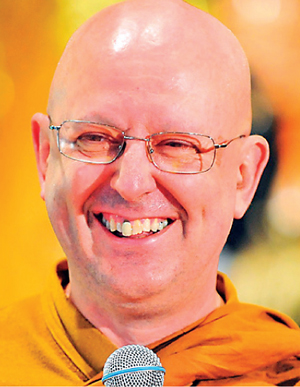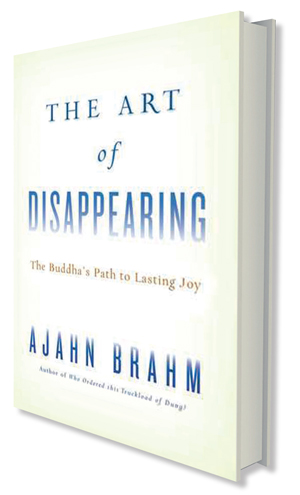Reply To:
Name - Reply Comment
Last Updated : 2024-04-19 00:03:00

I started reading this book after a close friend of mine – a buddy I have known for more than three fourths of my life - convinced me to do so. He is a deeply religious type, unlike me. He encouraged me to read this not because we were pals, nor for his religious zeal, but rather due to his outlook on life and the essence of happiness he tends to carry with his person or his countenance. I felt that, maybe, he was trying to pass a strong message to me, which he might not have been able to do otherwise. This is possibly one of those rare instances I followed the advice of reading a book.

I have many books, probably around fifty or sixty, on Buddhist philosophy written by reputed Buddhist scholars in my collection. They all get postponed in winning a reading slot nowadays (I have read a few chapters in most of these, more than half in many others). I read chapters of them as part of some studies I did a few years back. Of these books, I discover that most, written by university-based intellectuals, explore ‘The Philosophy of the Buddha,’ weighed, measured and based with modern standards of knowledge as a scale.
They are a criticism on another body of knowledge as they want to treat Buddhist Philosophy. However, there is no doubt that I would acquire a pool of knowledge on Buddhism upon the completion of these. I would know more facts, and possibly possess more points of view to nurture a dialogue. But does it assist me in following the path recommended by the Buddha, towards liberation? No. They are at best, well-written books on Buddhist Philosophy. They are most excellent treatises if one is hungry to educate oneself about Buddhist philosophy. I am afraid that this includes the Abhidhamma as we learn it from books today.
Then there are the other types of writings which hold every word in the Buddhist commentaries as the absolute truth. While it is still possible to disregard these references and glean out the real Dhamma in them, they are to some degree an exercise of scholasticism, which adds work more, and is not my intention in reading a book on Dhamma. (This in no way is a criticism on others who read the two types of the
aforesaid books.)
What is distinctive about this book? Well, the most unique feature is its simplistic approach. It is authoured in a style that makes the reader convinced that maybe meditation would not be too difficult to practice. That it must be a rewarding experience, if a Cambridge graduate of theoretical physics, a scholarship winner, gave all of that up to don the robes. Then, in these eleven concise essays, he dwells on how to begin meditation, how to look out for distractions, how to avoid pitfalls and how to make progress with meditation. I make the following extracts as demonstrations to build my case on the usefulness of this book:

“When you disengage from the outside, meditation just happens. It is important to realize that you do not make it happen. I do not like it when people teach others to use willpower to watch the breath. It is better to use wisdom power. Through wisdom you see that the world is suffering, and then you disengage, you get nibbidā. You cannot do anything else; it is an automatic reaction. So understanding suffering and disengaging are the base that you always come back to. And the more you disengage the easier it is to meditate. When I say easier, it is just that meditation happens, that is all.”
“Once you start to taste the stillness in the mind, it is terribly addictive. It is meant to be. It is a good thing because the addiction of the mind to stillness is what is going to drive you deeper toward nibbāna. The Buddha actually said that attachment to deep meditation can lead only to the stages of enlightenment (DN29). You do not have to be concerned or worried about the addiction to letting go. This is the pleasure, joy, and path of monastics. It is their freedom. It is an addiction that leads to more and more fading away and letting go. Nibbidā increases and it pushes you away from the world.”
“To make this sort of practice truly effective, use caring attention. Caring attention is not just being mindful but also looking upon those feelings with gentleness and compassion. You are not just aware of the sensations, but you are kind and gentle with them. Kindness and gentleness, along with mindfulness, make it easier both to engage with the object and to calm and tranquilize it. For example, if you have aches in the knees or some sort of tension in the body, you will find that using mindfulness, plus a little bit of compassion for yourself, makes it easy to maintain your attention on the body.”
“Do not go looking for insights at this stage. Do not get into thinking and trying to understand things. Understand stillness - just one thing. The great thinkers in this world can think, but they do not necessarily have a deep understanding. There are very few people who can get their minds still and peaceful, so become one of those few. See how much stillness you can create, or rather, allow to occur, in your mind. The truly calm mind is so still that hardly anything happens in it. Do not be afraid of the dullness that initially may be a result of the stillness. The dullness soon disappears, and the stillness becomes vibrant, powerful, and full of energy. The still energy – that is the one to go for. In deep meditation there is absolutely no motion, and you have got more energy than a nuclear reactor.
It is a great practice. As the mind does less, it has more energy, and in time the mindfulness becomes incredibly powerful. With the power comes great brightness - a naturally caring and energetic brightness. When you have happiness and the compassion that comes with it, it is easy to go deep into the beautiful breath meditation.”
At the time of writing this, I have not started practising any meditation. But if I am to ever give meditation a try, this book was the mere persuasion. It also convinced me that maybe I do not need to wait till I meet this perfect guru to get started. This itself is a change in my attitude towards meditation, it being something I have hitherto postponed for years later, given that my love for family life and desire for books on various subjects and music is such. As for my friend, I may never thank him, just as I never say sorry to him - or he to me - we being beyond those terms.

Add comment
Comments will be edited (grammar, spelling and slang) and authorized at the discretion of Daily Mirror online. The website also has the right not to publish selected comments.
Reply To:
Name - Reply Comment
On March 26, a couple arriving from Thailand was arrested with 88 live animal
According to villagers from Naula-Moragolla out of 105 families 80 can afford
Is the situation in Sri Lanka so grim that locals harbour hope that they coul
A recent post on social media revealed that three purple-faced langurs near t